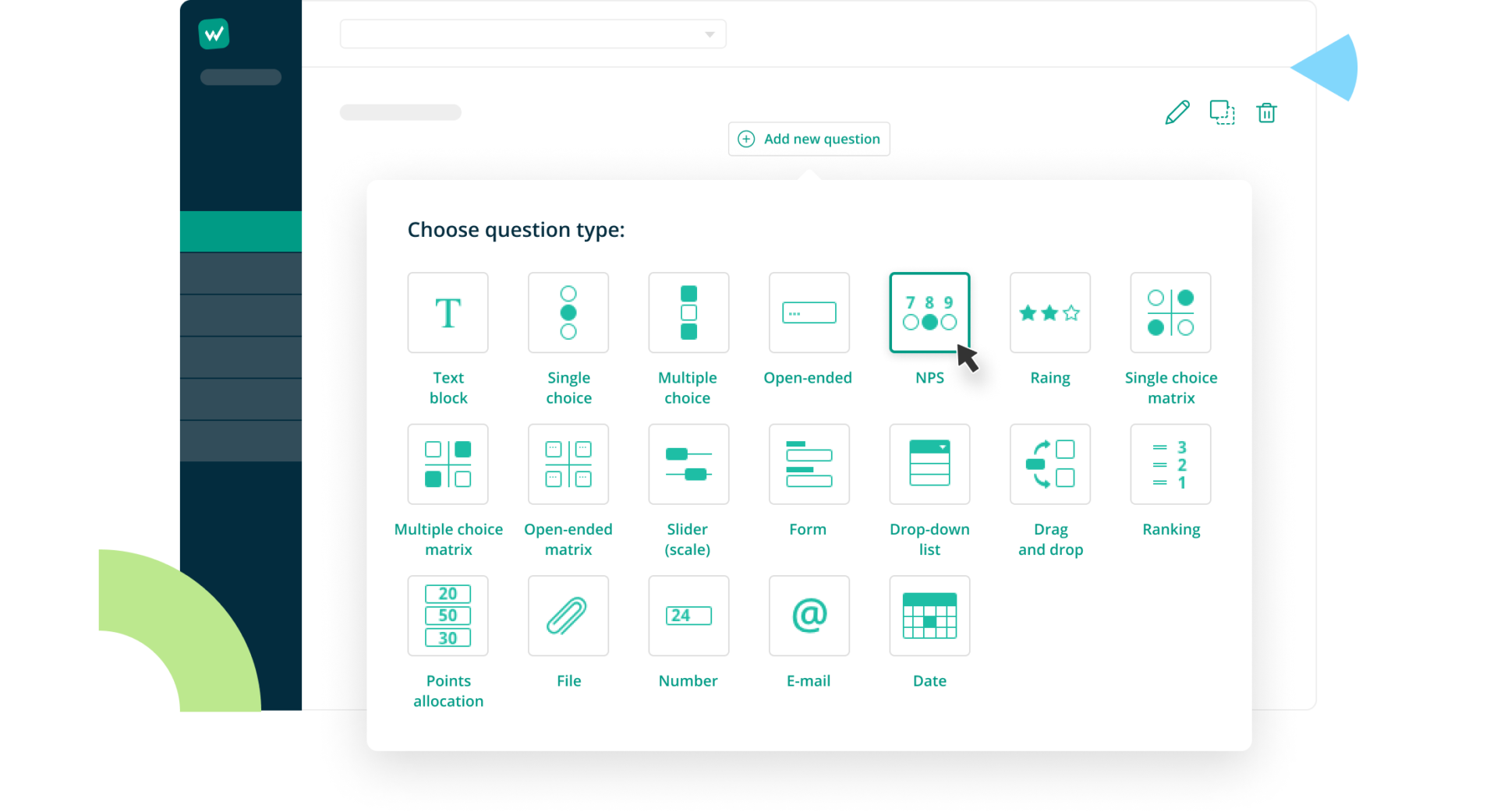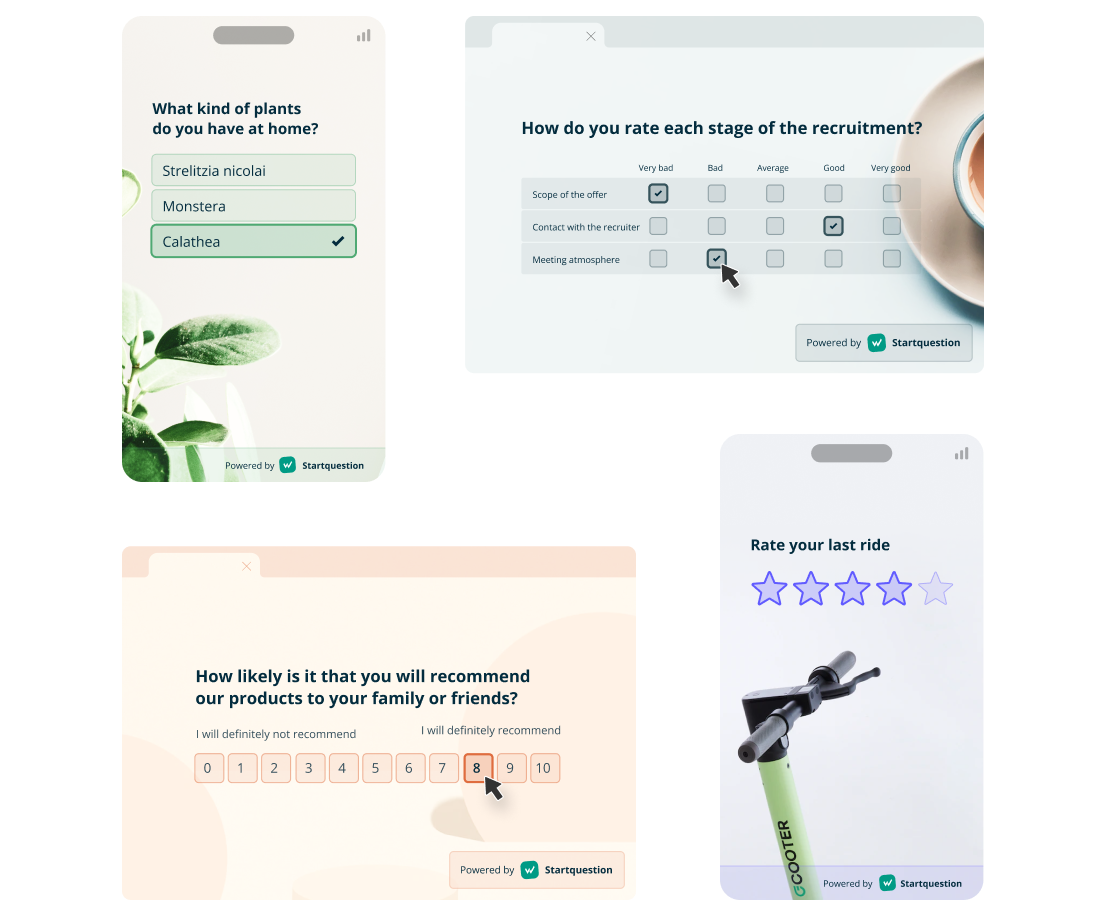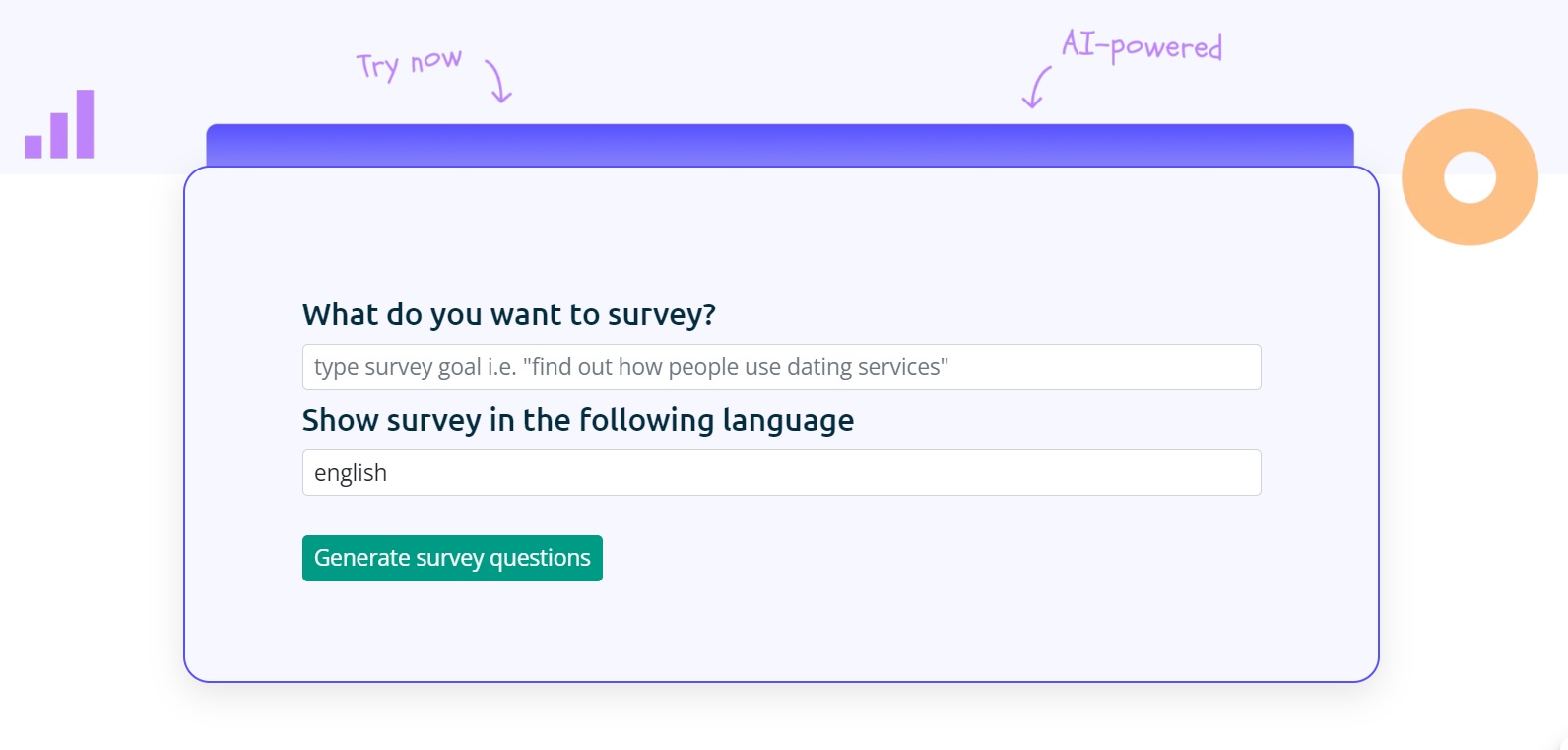In an era where patient-centric care is gaining prominence, healthcare providers face the challenge of meeting rising expectations while delivering effective medical treatments. Understanding the importance of measuring patient satisfaction has become paramount for providers striving to excel in this new landscape.
This article delves into the significance of patient satisfaction, providing an example of patient satisfaction survey and expert tips on genuinely listening to the voices of those who need medical care.
Why Is Patient Satisfaction Important?
According to recent findings from The Beryl Institute, 63.8% of medical care organizations place paramount importance on enhancing patient’s experience. The data reveals that these organizations are keen on tackling key aspects such as quality, safety, and service to ensure an overall improvement in patient satisfaction.
What Does a Patient Journey Mean for Medical Facilities?
The patient journey refers to the different stages and experiences that individuals go through when seeking healthcare services.
It includes everything from the first interaction with a healthcare provider, the diagnosis and treatment process, and even the important care and follow-up after treatment. It’s worth noting that the exact stages of the patient journey may vary depending on the healthcare system and individual situations.
The healthcare journey involves:
- Becoming aware of health concerns.
- Preparing for a visit.
- Enrolling and consulting with healthcare providers for diagnosis and treatment.
Treatment may involve medication, therapy, surgery, or monitoring. Follow-up appointments, rehabilitation, and long-term management are crucial for overall well-being and preventing complications.
At every stage of this journey, it is worth taking care of the patient’s satisfaction. In the next paragraph, I will explain why it is essential for any medical facility.
Patient Satisfaction Survey
If you run a clinic or a facility providing professional healthcare, our survey template will help you quickly gain key knowledge about patient satisfaction.
Patient Satisfaction Survey
If you run a clinic or a facility providing professional healthcare, our survey template will help you quickly gain key knowledge about patient satisfaction.
Why Is It Important to Measure Patient Satisfaction?
In times of continuous development and popularization of private medical care facilities, patient satisfaction is precious and vital for hospitals, doctor offices, nurses, and management staff of health organizations. Here’s why comprehensive service quality matters so much:
Increase Patient Retention Rates
Satisfied patients are more likely to remain loyal to a healthcare provider or facility. Healthcare organizations can identify improvement areas by estimating patient satisfaction and promptly addressing concerns. This proactive approach can help enhance the overall patient experience, leading to higher patient retention rates.
Improve Patient Experience
Patient satisfaction measurement allows healthcare providers to gain insights into the factors contributing to a positive patient experience. By collecting patient feedback, organizations can identify areas where they excel and areas that need improvement. Such insights help implement changes that enhance the overall patient experience, improving satisfaction.
Improve the Performance of the Hospital Staff
Patient satisfaction surveys provide valuable feedback on the performance of hospital staff, including doctors, nurses, and administrative personnel. By analyzing this feedback, healthcare organizations can identify areas where staff members excel or require additional training or support. It helps optimize staff performance, ensuring patients receive high-quality care and service.
Map and Track Patients’ Journeys
Patient satisfaction measurement allows any healthcare organization to map and track patients’ journeys throughout their healthcare experience. It includes understanding patients’ touchpoints, interactions, and processes, from scheduling appointments to post-treatment follow-ups. Organizations can identify pain points, streamline processes, and create a more seamless and patient-centered healthcare experience by analyzing this journey.
Enhance Quality of Care
Measuring patient happiness helps healthcare providers assess the quality of care they deliver. By monitoring patient feedback, organizations can identify gaps in care delivery, areas for improvement, and potential safety concerns. This information can then be used to implement strategies to enhance the quality of care, ultimately leading to better patient outcomes.
TL;DR
It’s mostly about money.
Positive digital patient experiences are crucial in healthcare. A single negative interaction can ruin the entire experience for half of the healthcare consumers (Accenture), while positive interactions are essential for 39%.
59% of millennials (Intuit) would switch their primary care provider for better online services, highlighting the importance of seamless digital connectivity.
How to Prepare a Patient Satisfaction Survey?
Preparing a patient satisfaction survey template involves careful planning and consideration of the specific objectives and requirements of the healthcare provider. Here are some steps to help you design a professional questionnaire:
- Determine Survey Objectives
Clearly define the purpose and goals of the survey. Identify the aspects of the patient experience you want to assess and the information you seek to gather. For example, focus on communication, wait times, staff professionalism, facility cleanliness, or health plans.
- Select Survey Methodology
Decide on the survey format and delivery method. Standard options include paper-based surveys, online surveys, telephone interviews, or in-person interviews. Consider the advantages and limitations of each method and choose the one that best suits your target population and resources.
- Design Patient Survey Questions
Develop a set of clear, concise, and relevant questions that align with your survey objectives. Ensure the questions are unbiased and avoid leading or confusing language. Use closed-ended questions (multiple-choice, Likert scale) and open-ended questions to gather quantitative and qualitative data.

- Organize Survey Sections
Structure the survey into logical sections covering different patient experience aspects. For example, you can have units on appointment scheduling, waiting room experience, healthcare provider interactions, communication, and overall satisfaction. It helps respondents navigate the survey and makes analysis more accessible.
- Pay Attention to Survey Length
Keep the survey length reasonable to encourage participation and minimize respondent fatigue. Prioritize the most critical questions and avoid unnecessary repetition. Ideally, the survey should take a couple of minutes to complete.
- Pilot Testing
Before deploying the survey, conduct a pilot test with a small group of patients to evaluate the questions’ clarity, relevance, and effectiveness. Make necessary adjustments based on their feedback and ensure the survey is user-friendly.
- Include Demographic Questions
Collect feedback such as age, gender, ethnicity, and healthcare utilization to provide context for the survey results. However, consider privacy and data protection regulations when collecting and analyzing such information.
- Ensure Anonymity and Confidentiality
Assure patients that their responses remain anonymous and confidential to encourage honest feedback. Consider using unique identifiers instead of personal identifying information to link responses to demographic data if needed.
- Establish a Timeline and Communication Plan
Communicate the survey purpose, importance, and timeline to patients to encourage participation. Determine when and how you will administer the survey, whether during a specific period or continuously. Consider using multiple communication channels (email, website, waiting room posters) to reach a wider audience.
- Understand What Patients Expect
Analyze and interpret collected data to identify trends, patterns, and areas for improvement. Utilize statistical analysis for quantitative data and categorize and summarize qualitative responses. Present the findings clearly and meaningfully, highlighting key takeaways and actionable recommendations.
- Take Action and Provide Feedback
Share the survey results with relevant stakeholders, including healthcare providers, administrators, and staff. Use the feedback to drive quality improvement initiatives, address identified issues, and enhance the patient experience. Communicate the actions taken based on the survey results to demonstrate that patient feedback is valued and leads to positive changes.
Regularly repeating satisfaction surveys allows healthcare facilities to monitor and continuously improve existing patients’ experiences.

Examples of Patient Satisfaction Survey
Enough theory. Let’s get to the practice. It’s time to prepare a patient satisfaction survey questionnaire that will allow you to collect valuable feedback.
We have prepared a list of 15 questions to use in the questionnaire. We also have a ready-made template for a patient satisfaction survey and an online survey generator powered by AI, with which you can create any research in just 60 seconds.
15 Patient Satisfaction Survey Questions
1. What was your experience with booking
2. How would you rate our staff
3. Did the medical professionals provide you with clear next steps
4. What do you think about our prices?
5. Are you satisfied with the digital experience we provide?
6. How would you rate the overall quality of care you received during your visit?
7. Did the healthcare staff treat you with respect and courtesy?
8. Did the healthcare staff communicate clearly and effectively with you?
9. Were you involved in the decision-making process regarding your treatment or care?
10. How satisfied were you with the cleanliness and comfort of the facilities?
11. Did you receive clear instructions on how to manage your condition at home?
12. How would you rate the timeliness of your appointments or procedures?
13. Were your privacy and confidentiality protected during your visit?
14. Did you feel that your concerns and questions were adequately addressed?
15. Would you recommend this healthcare facility to family and friends?
Measure Patient Loyalty with AI Survey Creator
We understand that every medical facility has a unique patient population, meaning that satisfaction survey questionnaires will differ for a hospital, maternity clinic, extended medical care facility, or dental office.
To simplify your work, we offer sample questions and satisfaction survey templates. Additionally, we have developed an AI-powered survey creator that can generate tailored questions for your medical facility in less than a minute. All you need to do is enter the appropriate command and select the language.
We invite you to try it out and see how it can assist you in your work.
Click here to test Startquestion AI Survey Creator.

When Should You Conduct Patient Satisfaction Surveys?
You may conduct satisfaction surveys at different stages of the healthcare process to receive feedback and evaluate the quality of care provided, regardless of how you prepare them.
After Appointments or Consultations
One common practice is distributing surveys to patients after their appointments or consultations. It allows them to provide feedback on their experience, including communication with hospital or physician practices, wait times, and overall satisfaction with the visit.
Following Hospital Stays
After leaving the hospital, patients can take a satisfaction survey to provide feedback on their care. It includes rating the quality of care provided, the attentiveness of the medical staff, pain management, cleanliness, and any concerns they may have had during their stay.
After Specific Procedures or Treatments
Patients who have received treatments or undergone specific procedures can be given surveys to evaluate their experiences and outcomes. It helps identify improvement areas, measure the intervention’s effectiveness, and gauge patient satisfaction with the overall process.
Ongoing Feedback during Long-Term Patient Care
For patients who receive long-term care or are involved in chronic disease management programs, it’s helpful to conduct occasional surveys. Such research can help track patient satisfaction and gather feedback on the quality and effectiveness of ongoing care.
Post-discharge or Follow-up
After being discharged, patients may receive satisfaction surveys to evaluate their experience throughout the care process. The surveys cover the discharge process, post-treatment instructions, medication management, and overall satisfaction with the care provided.
Your Tool to Conduct Patient Satisfaction Surveys
Regarding patient satisfaction surveys, it’s important to remember that the timing and frequency can differ based on factors such as the healthcare setting, survey goals, and available resources for collecting and analyzing data.
In addition, various methods can be used, like online surveys, phone interviews, or paper-based questionnaires, depending on the organization’s patient population and operational requirements.
The method and way you choose to obtain feedback and, as a result, improve the satisfaction and loyalty of your patients depends only on you and your organization’s needs.
We will be delighted if we can accompany you on this journey.




